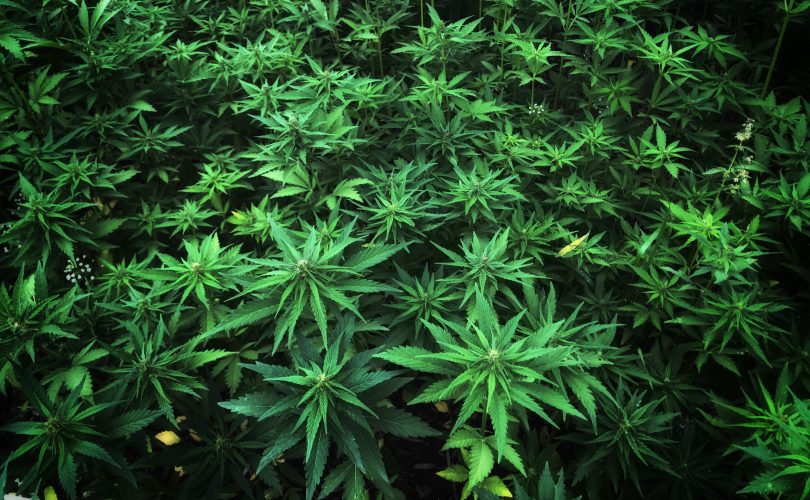It’s a well-known fact that hemp is an incredibly versatile plant, one that can be smoked, eaten, and processed into a seemingly endless number of different products ranging from topicals to plastic.
Topping the list of innovative new hemp creations is a high-performance energy storage device which scientists say can perform better than graphene and lithium. So essentially, hemp batteries. According to the research team, this technology can be used to power electric cars, power tools, and many other items.
This discovery was first presented at the American Chemical Society Meeting in San Francisco, California, and published in the journal ACS Nano. Team lead, Dr. David Mitlin of Clarkson University, New York.
“We’re making graphene-like materials for a thousandth of the price – and we’re doing it with waste,” says Miltin. “The hemp we use is perfectly legal to grow. It has no THC in it at all – so there’s no overlap with any recreational activities.”
For more articles like this one, subscribe to the CBD Business Weekly Newsletter.
How do Hemp Batteries Work?
Hemp is grown industrially in many countries to be used for creating clothing, rope, building materials, plastic items, and many other products. After the plant is harvested, the bast fiber – or inner bark of the plant – is typically discarded as waste and thrown into a landfill or similar.
However, Miltin’s team found a use for these fibers. They “cooked” the hemp bark into carbon nanosheets and build supercapacitors – a type of energy storage device that’s revolutionizing the way electronics are powered. The difference between supercapacitors and conventional batteries is the way they’re used to discharge energy. Regular batteries store and slowly-feed energy to whatever is being powered, whereas supercapacitors rapidly disperse their entire load.
Supercapacitors are often used to power machines that require quick and powerful bursts of energy, like electric cars for example. According to Miltin’s research, these hemp batteries are more powerful than the industry gold standard: Graphene, which is prohibitively expensive to produce on a regular basis.
These high costs and unsustainability is what prompted the need for a manageable alternative. “You can do really interesting things with bio-waste. We’ve pretty much figured out the secret sauce of it,” said Dr Mitlin.”The trick is to tailor the right plant fiber to the right electrical device – according to their organic structure.”
He continued: “With banana peels, for example, you can turn them into a dense block of carbon – we call it pseudo-graphite – and that’s great for sodium ion batteries. But if you look at hemp fibre its structure is the opposite – it makes sheets with high surface area – and that’s very conducive to supercapacitors.”
“The first step,” he explained, “is to cook it – almost like a pressure cooker. It’s called hydrothermal synthesis. Once you dissolve the lignin and the semicellulose, it leaves these carbon nanosheets – a pseudo-graphene structure.”
4 Ways Hemp Plastic Can Help Save Our Planet
Graphene Explained
Graphene is a monolayer (single layer) of carbon atoms, tightly arranged in a hexagonal honeycomb structure. It is the thinnest structure known to mankind, at only one atom thick. Despite this, it’s about 200 times stronger than steel and conducts electricity better than copper.
Just like hemp, this “miracle material” has a myriad of different uses. As you can imagine though, there are a number of limitations when synthesizing a material that’s only one atom thick. Although cheap to purchase in small amounts, buying bulk can be extremely pricey.
The price of graphene has been in constant flux since its discovery in 2004. The most accurate report from Nature claimed that one micrometer-sized flake of graphene cost over $1,000 to produce, making graphene one of the most expensive materials on Earth. While some scientists continue searching for a way to scale back the costs of graphene production, others are looking for new materials altogether.
Although hemp can’t do everything that graphene can, when it comes to energy storage, its performance is on par. “They work down to 0C and display some of the best power-energy combinations reported in the literature for any carbon,” says Miltin.
“For example, at a very high power density of 20 kW/kg (kilowatt per kilo) and temperatures of 20, 60, and 100C, the energy densities are 19, 34, and 40 Wh/kg (watt-hours per kilo) respectively. Fully assembled, their energy density is 12 Wh/kg, which can be achieved at a charge time less than six seconds.”
A Growing Need
At a fraction of the cost of graphene, we can expect hemp batteries to soon be marketed to numerous industries including oil and gas, and electric car production. This is especially true now that legal pathways for growing industrial hemp are a reality on most continents of the world. Miltin’s company, Alta Supercaps, is hoping to be the breakthrough company in this industry.
“For energy storage, hemp works just as well (as graphene), and it costs a fraction of the price -$500-1,000 a tonne,” Miltin mentions. “Fifty miles down the road from my house in Alberta there was an agricultural hemp processing facility. And all that bast fiber – it just sits in a high bay, and they don’t know what to do with it. It’s a waste product looking for a value-added application. People are almost paying you to take it away.”
Aside from its obvious economic benefits, hemp can be grown everywhere in the world, in varying climates and temperatures. More research needs to be done before it can be fully applied in the real world, but hemp batteries (and plastic, concrete, etc,) is the way of the future.
Click here or use the sign-up form below to subscribe to the CBD Business Weekly Newsletter.
Looking for the best hemp flowers? Subscribe to the CBD Flowers weekly!









